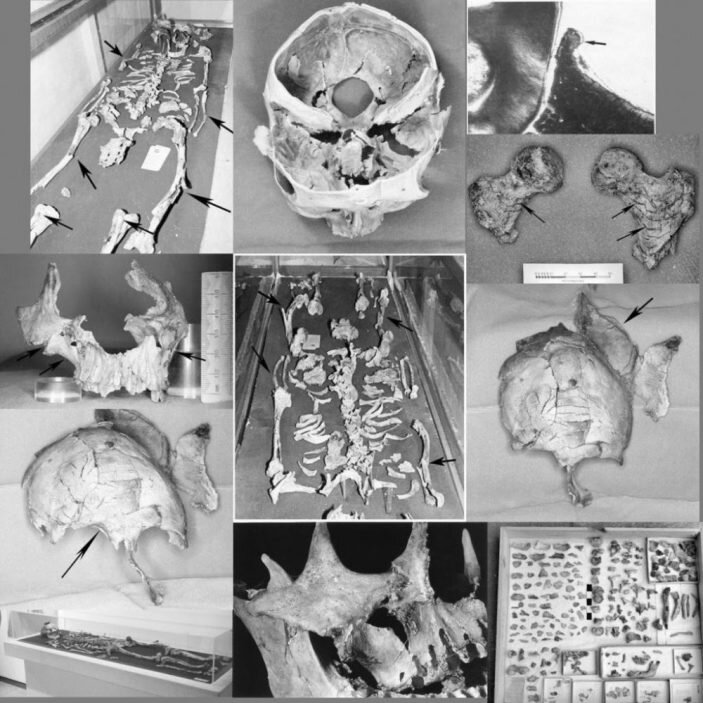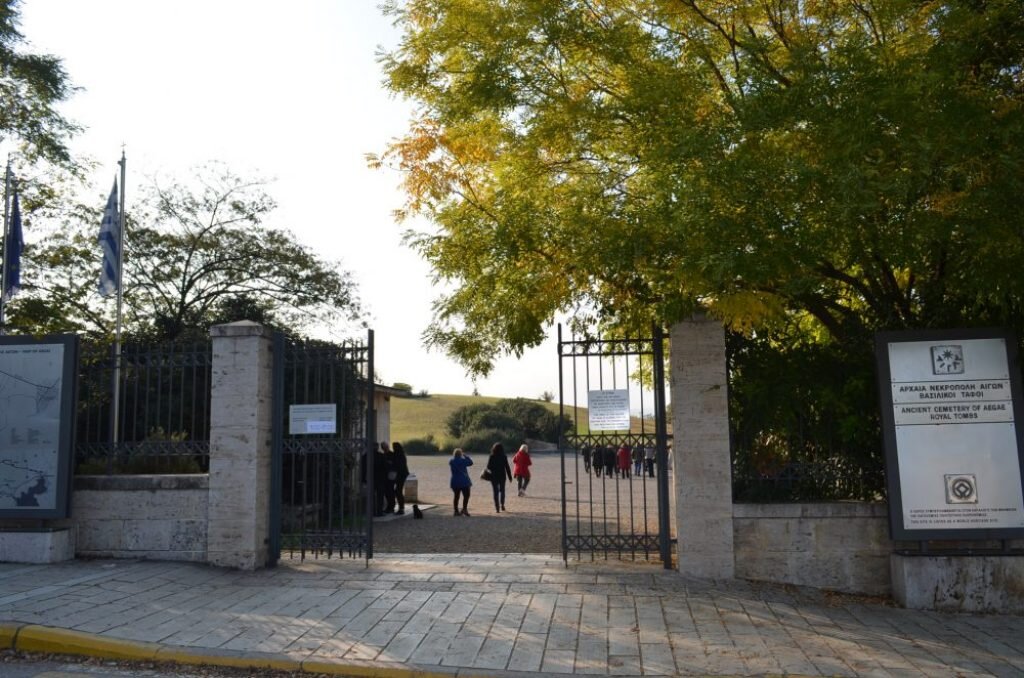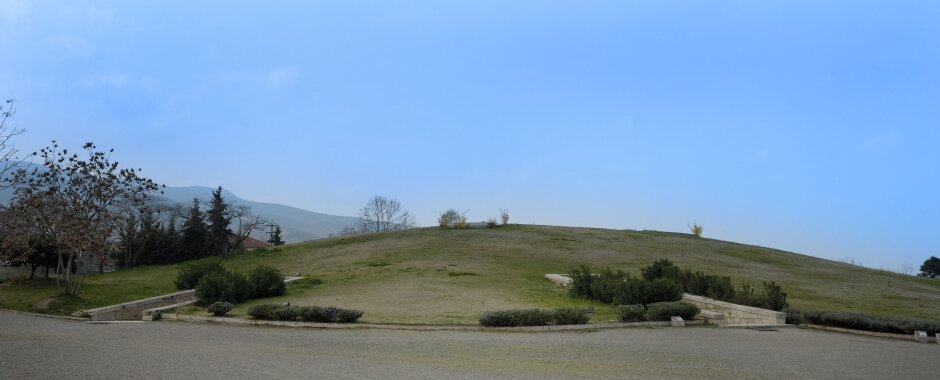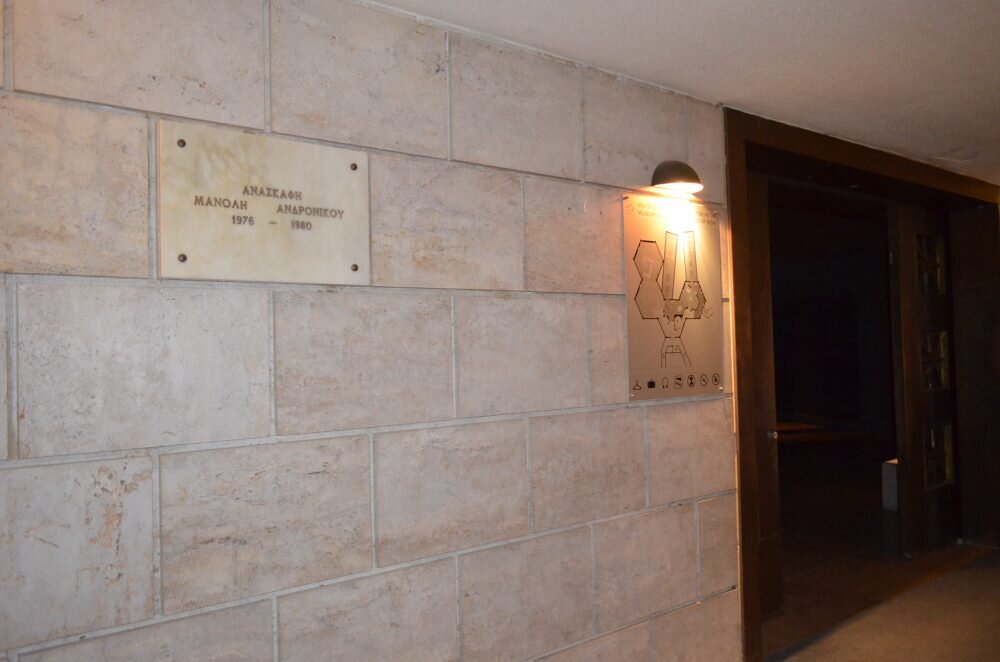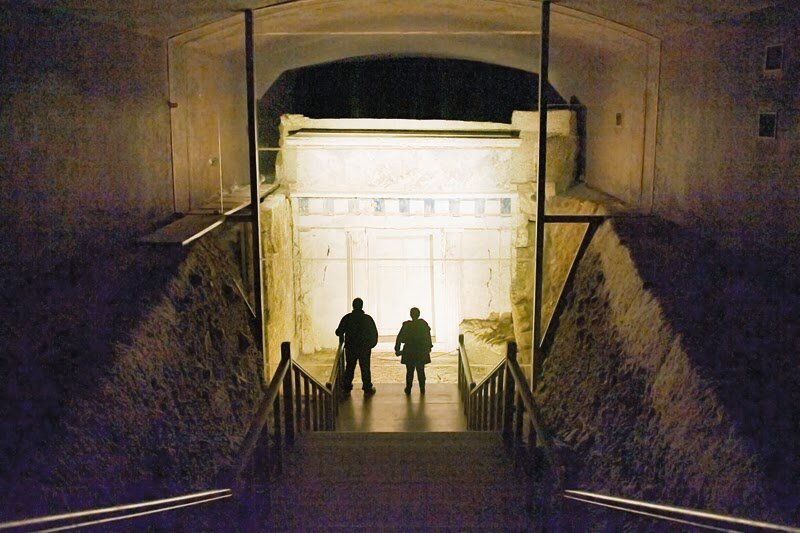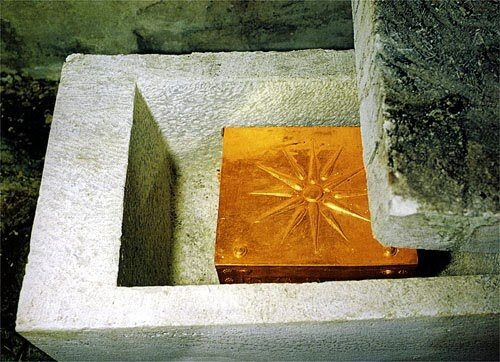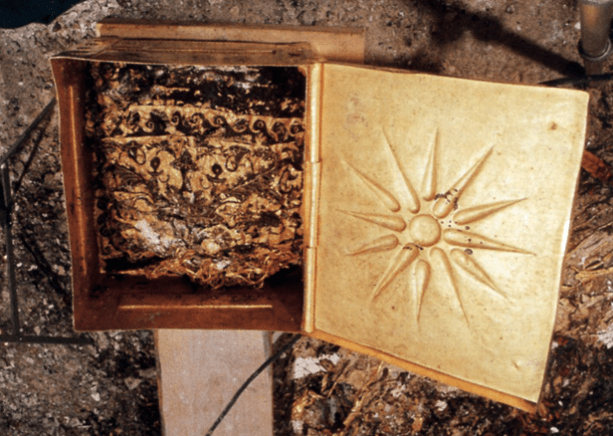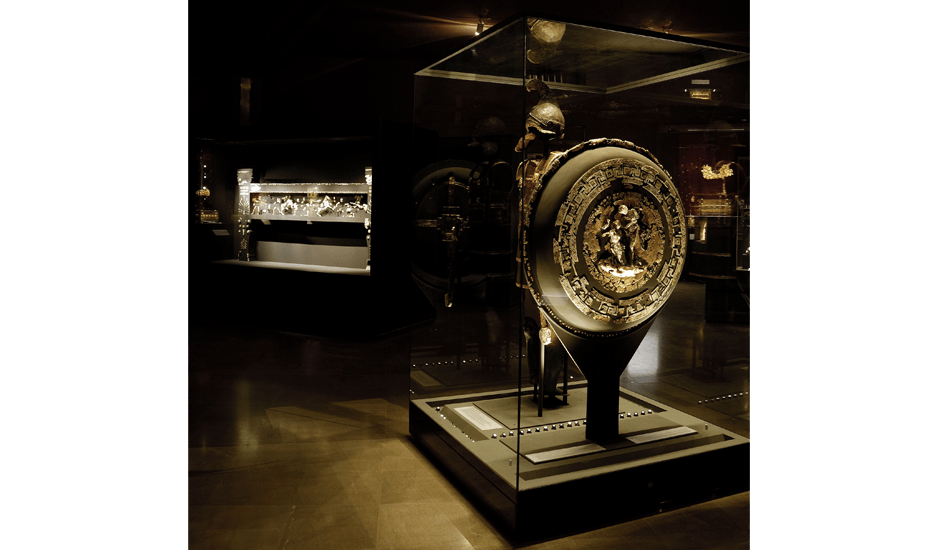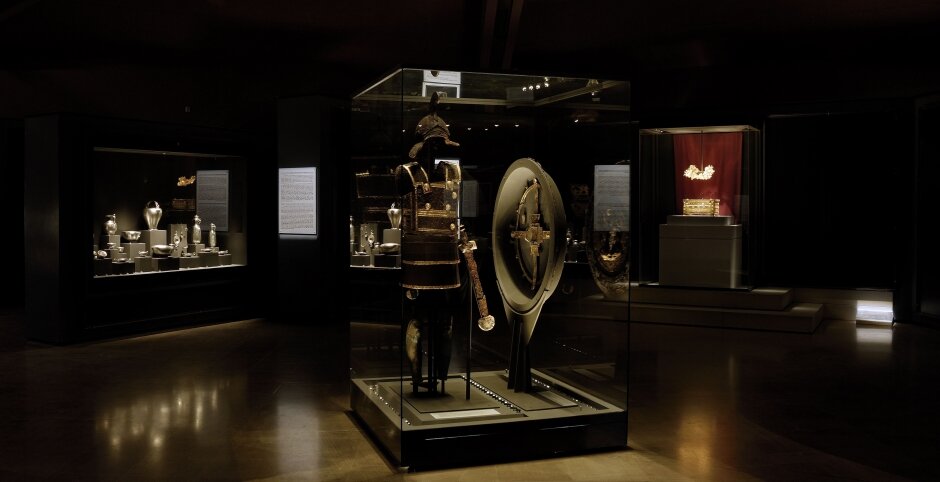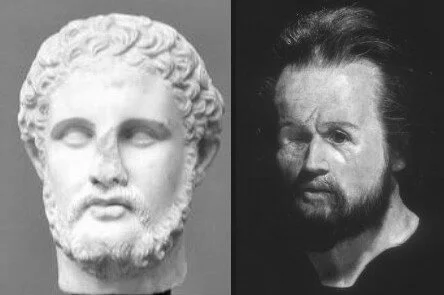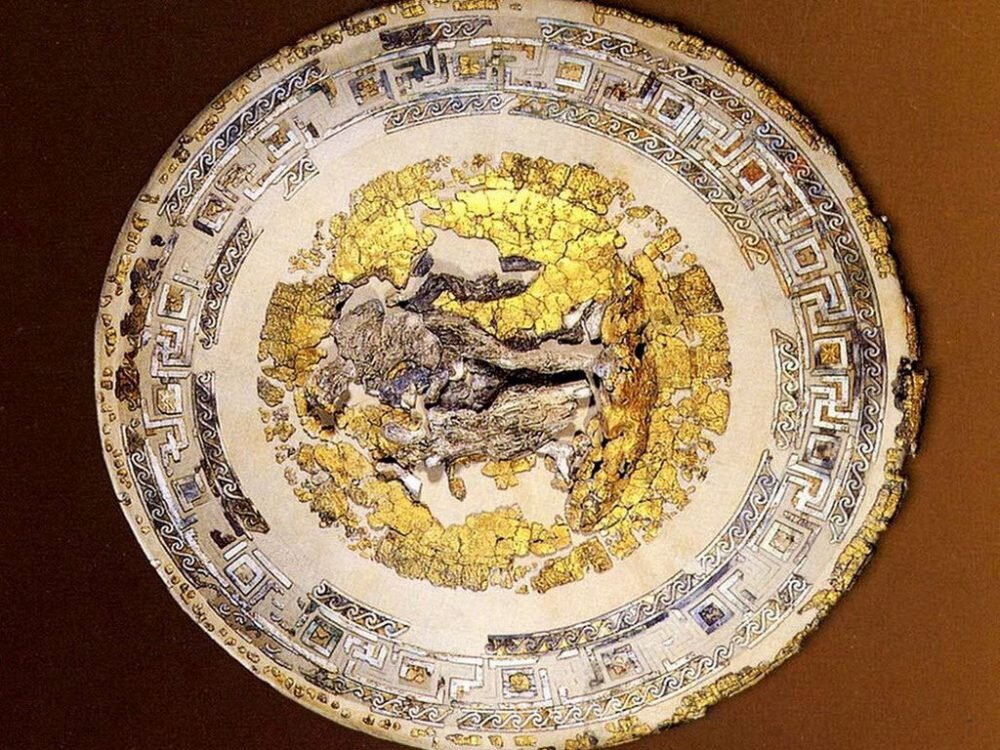On a rainy morning of November 8, 1977 Greek Archaeologist Manolis Andronikos, discovered in Vergina, a sleepy Greek Village, the tomb of Alexander the Great’s father, King Philip II of Macedon and Alexander’s son, Alexander IV! This historically important discovery shook the archaeological community and the world at large.
Vergina Village
Vergina village is located close to Veria city, about 100 miles away from the secret burial grounds of Amphipolis.
Archeologists have been looking to complete the story of Macedon since 1850s.
By the end of the decade, Emperor Napoleon III of France had ordered excavations in the burial mounds around the area to search for Aegae. By 1922, the area became inhabited as a modern village of Vergina, and was already on the radar by 1937 when remains of an ancient palace were dug out. World War II stopped the work, and people forgot about it for a little while.
However, in 1977 Manolis Andronikos, led a dig around a large mound (called the Great Tumulus), under the supervision of English classicist Nic Hammond. This eventful dig uncovered a site of unopened Royal Tombs hidden under the 110m by 13m structure. Historians concur that the structure was built by Antigonos Gonatas to protect desecration of Royal Tombs when Galati raided the area and looted cemeteries. The finds from the burial are remarkably well–preserved.
Granted a “World Heritage Site” status by UNESCO, the discoveries began an exciting phase in the debate regarding the identification.
Opinions remained divided regarding the cremated remains inside the golden caskets.
Some said it is Phillip II (father of Alexander) and one of his wives. The casket contained specially shaped graves to fit a leg with broken shin-bone –consistent with the fact that the king had injured his right leg during the Ardian war (345 BC). Others argued it is Philip III Arrhidaeus (Alexander’s half-brother) who became the king after Alexander’s death and his wife Eurydice.
Finally, the most detailed and extensive study ever conducted on the remains have settled the decades-old argument, confirming the bones indeed belong to the Macedonian King Philip II.
Eventually, the debate was settled for good by Theodore Antikas, who led the Art-Anthropological team of researchers in Vergina. He studied the bone fragments and concluded there were several wounds, including maxillary and frontal sinusitis from a face wound. Wax reconstruction of the skull confirmed trauma from an arrow wound matching the history of Phillip II, who was blinded by a similar wound. The other skeleton was confirmed as that of a Scythian warrior princess.
The man was one-eye blind, had a damaged foot and yet he married seven times? Take that, Larry King!
Wall painting depicting the Rape of Persephone.
There were three tombs discovered.
The first one was already looted, with few human remains and a stunning wall painting depicting the Rape of Persephone, left behind.
Tomb II and Tomb III were undisturbed.
The second tomb hosted a nearly intact male skeleton, complete with 350 bones and fragments. It was estimated to be roughly 35-55 years old, consistent with Philip’s age at the time of assassination (46). The antechamber contained cremated remains of a female.
Alexander the Great himself stood once in front of this tomb, saying the last goodbye to his father, Philip.
Even after so many centuries, the power of these so important personalities make any visitor remain silent in front of this tomb, showing respect and admire for them.
The large tomb has a façade which mimics a Doric temple with carved metopes, frieze and hunting scenes painted on it (with a group of seven men shown chasing a deer, a lion and a boar). One of them sports a beard, believed to be Phillip himself.One of the young men in the painting is assumed to be Alexander. The paintings, supposedly the work of artists Nikomachos and Philoxenes are the last surviving examples of ancient Greek painting.
The golden larnax – the urn with the Royal ashes – were preserved in the chambers for nearly two thousand years.
Weapons, assortment of bathing equipments and symposium decorated with gold, ivory and glass were all found within. The smaller chamber also had a similar collection and décor, most likely belonging to one of his wives – Meda of Odessa, Cleopetra Eurydice or daughter of Scythian king Ateas, defeated by Philip II.
In the antechamber of Philip’s tomb another gold larnax was discovered with a royal diadem inside a marble sarcophagus, together with a wooden mortuary couch with similar decoration to Philip’s.
The larnax must have contained the ashes of one of his wives, Meda or Cleopatra or the daughter of Scythian king Ateas, whom Philip II defeated .
Mismatched length in the greaves linked in this antechamber indicates a fracture and muscle atrophy in left leg. Besides being one of the earliest recorded proof of a ‘disabled royal’ it also questions the identity of the woman. But there is no historical information about who this woman was nor that Philip II had a Scythian princess as a wife-concubine. Cleopatra, Philip’s youngest wife, was assassinated immediately (by Olympias) after her husband. No Scythian princess is recorded as a wife either. It makes you wonder whether it was Audata, who was trained in martial arts and a skilled warrior.
Additionally, an elaborate ceremonial shield, an iron helmet, gold and iron cuirass, and a silver gilded crown were found in the excavations. Couple of small ivory portrait heads found, are believed to represent Philip II and Alexander.
Portrait heads of Alexander the Great and Philip II
Additionally, an elaborate ceremonial shield, an iron helmet, gold and iron cuirass, and a silver gilded crown were found in the excavations. Couple of small ivory portrait heads found, are believed to represent Philip II and Alexander.
Golden diadem
According to archaeologists this golden diadem, that belonged to one of the wives of Philip, is the most beautiful diadem ever found, with intricate details like a tiny bee on the top leaf. I wouldn’t notice it if the guide didn’t mention it.
King Philip II
King Philip II was a ruler from fourth century BC whose efforts to reform the army of Macedonia and planned the invasion of Persia served as the foundation for the achievements of his son, Alexander the Great.
Classical portrait of Philip II of Macedonia (left – Glyptotek Collection of classical and modern art –Copenhagen, left- portrait reconstruction by the University of Manchester)
A great warrior, Philip II assumed his throne around 359 BC and single-handedly united the army of Macedonia, laying the foundation for the great triumphs of his son, Alexander with the invasion of Persia. His expansion tactic, where he professed friendship with neighboring regions of Thessaly, Illyria, Balkan states and Thermaic Gulf until he attacked and conquered them – makes him the earliest proponents of ‘divide and rule’ formula.
King Philip II survived and ruled over Macedonia until 336 BC, when he was killed by Pausanias of Orestis.
Philips death
The guide informed us about the irony of Philips death. Philip had paraded statues of the twelve gods extravagantly fashioned with the most magnificent workmanship, , embellished with precious stones and metal. Along with these a thirteenth was carried in procession, a statue fit for a god, one of Philip in person,he implied he was the next God. It was a sin and Macedonians were expecting that Gods would revenge. So it happened.
While the king was entering unprotected into the town’s theater (highlighting his approachability to the Greek diplomats present), at some distance from his guards, as an indication to everyone that he had no need of the protection, he was killed by Pausanias of Orestis, one of his seven bodyguards.
Another story goes that Philip, the King who once ruled over one of the largest kingdoms in history of mankind, supposedly fell to the jealousy of his wife Olympias. A polygamist, Phillip’s marriage to Cleopatra Eurydice threatened Olympias and the succession of her son Alexander to the throne. She apparently was the mind behind Philip’s assassination by the head of his bodyguards, Pausanias of Orestis.
King Philip II had at least seven known wives. That means six mother-in-laws too! I think that is the real reason of his death.
The burial of Alexander IV
Symposium utensils from the tomb of Alexander IV
The third tomb is believed to contain the cremated ashes of Alexander IV
Cassander was supposed to be the regent until Alexander IV was old enough to rule, but to assume full control he had the 12-year old Alexander IV and his mother Roxana poisoned in 310 BC.
At its centre lies the silver urn that held the cremated bones of the young prince, surrounded by exquisite ivory reliefs decorating the bier.
The Heroön
Next is the Heroön, a building which was intended for the cult of the dead kings. The foundations and the cist grave survive. This is a particularly important grave because it contained a wall painting of the rape of Persephone by Pluto. It was found desecrated.
The Heroon (over-ground building monumental sanctuary for a hero)
More photos:
Source: moco-choco





